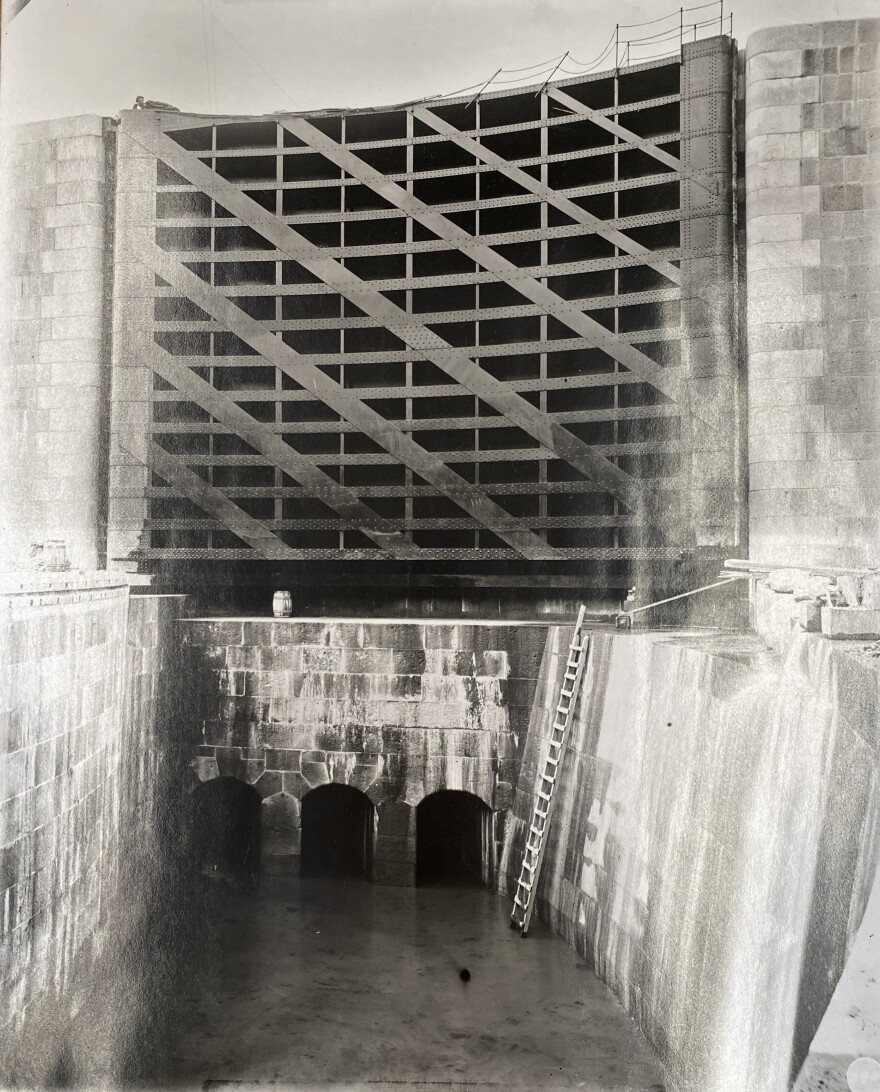If you are behind on the Underground History podcast, you are going to want to run, not walk, to catch the recent episode on how one of Oregon’s most famous cold cases was closed using archives, archaeology, and a lot of time in a wetsuit. The Martin family went missing on December 7, 1958 after heading east from Portland in search of greenery for holiday wreaths. The following spring, the bodies of two of the three daughters were recovered from the Columbia River but, despite search efforts, the fate of the rest of the family remained a mystery. Fast forward several decades to 2025, and enter Archer Mayo: artist and professional diver with a penchant for solving mysteries. I was joined by Mayo on a recent episode of Underground History, and what followed was an unbelievable tale of ancient and modern floods, maritime history, underwater archaeology, and a humble photograph stored at the Oregon Historical Society.

mysteries.
Mayo has spent years diving in the Columbia River, experience that has given him unique insight into the complex environmental and cultural history of this powerful waterway. The mystery of the Martin family has received extensive coverage over the years and really piqued Mayo’s interest when he realized there was something unusual about the way 19th century infrastructure changed the river bottom near where the family was last seen. He suspected it might be why previous searches had failed and could lead to the discovery of the Martin’s long-lost tan 1954 Ford station wagon. When a local mentioned that a box of potentially relevant historic photographs had been taken to the Oregon Historical Society, Mayo hit the archives and made a critical discovery only he was likely to make.

Construction on the Cascade Locks began in 1878 and was concluded in 1896 as a means to improve the navigability of the river. The picturesque locks were a popular roadside attraction and remained functional until the Bonneville Dam was completed in the late 1930s. The area was formally developed for recreation in the 1950s, and for decades there were no barriers along the steep cliffside that provided the best view of the locks. Improvements to the nearby dam in the 1970s raised the water level and safety improvements to the viewing platform made it safer to visit. Piecing together this timeline, adding in construction details visible on the photographs, along with dates of flood and weather events, allowed Mayo to hypothesize that the Martin family vehicle was buried in several feet of sediment in an infilled pit at the foot of the locks roughly 50 feet under water. Working closely with local law enforcement, state and federal agencies and Tribal governments, Mayo received the needed permissions and permits to ground truth his theory. And it paid off—after a complex endeavor with a few false starts, Mayo and his colleagues were able to confidentially identify the vehicle and recover the personal effects and remains of Kenneth, Barbara, and Barbie Martin.
Perhaps unsurprisingly, conspiracy theories have surrounded the Martin family disappearance since the beginning—featuring ex-convicts, stolen guns, and many tales involving the surviving Martin child, Donald Martin, who was out of state at the time. But not all cold cases are the result of a crime, and thanks to Mayo’s tireless work, it is clear that the death of the Martin family was a tragic accident. Evidence supports the theory that the vehicle entered the water at the Cascade Locks viewing platform, perhaps due to the Ford’s finicky transmission paired with the dangerous drop from the parking lot. The case is now with law enforcement, who will provide updates once they complete their analysis, but Mayo said he has already received thanks from the many community members impacted or haunted by the case.

| 
|
What makes this story so fascinating, is the way it weaves together so many interesting facets of Oregon, be it true crime, environmental history, a curious and tenacious citizen detective, or the humbling moment that a cheery family outing went so devastatingly wrong. And, to boot, who is one of the unlikely heroes in this tale? The Oregon Historical Society! This case is such a great reminder of why curating and documenting history is so valuable: museums and historical societies regularly take in hundreds of documents, objects, and images without ever understanding how they might be used or experienced by future generations. Their foresight allows us to better understand our predecessors, appreciate societal and technological change over time and, every once in a while, solve a famous mystery.



